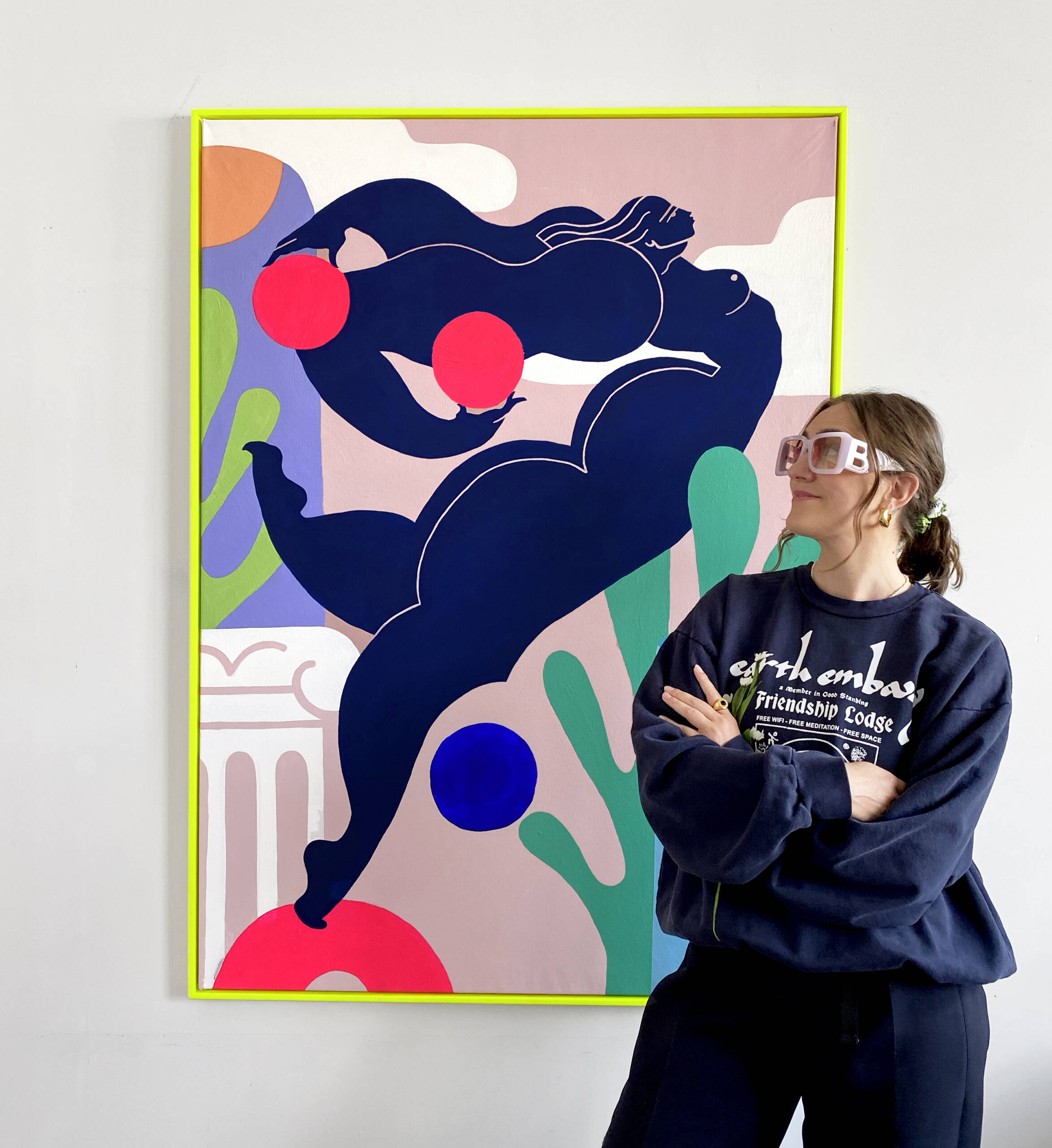EMAILS, PANIC, AND THE OCCASIONAL MASTERPIECE

From early mornings as a competitive swimmer to surreal campaigns for Gucci and Google, Max Siedentopf’s path is shaped by quiet discipline and a love for the unexpected. His creative process is rooted in repetition, instinct, and a refusal to force ideas into formats they don’t belong in. Whether working on personal or commercial projects, he embraces compromise—with clients or with his own soul—and sees humor as a powerful tool for depth. For Max, success isn’t about applause but about enduring the creative process. He doesn’t aim to give audiences answers—just thoughts that linger.

© Max Siedentopf
Let’s rewind for a second—what’s your earliest memory of being creative, and how did that moment shape your journey into the art world?
I can’t even remember what I had for breakfast. But at some point, this was the only thing that made any sense. So I stuck with it.
Before art took over, you were a competitive swimmer. How does that level of discipline and determination show up in your creative work today?
Since I was ten years old, I woke each morning at 4:15 a.m. for my first training session - I spent thousands of hours in silence, staring at a black line on the bottom of a pool. Moving from point A to point A. Always forward, yet arriving nowhere. There's only repetition. You spend that long underwater, you learn to live in your head. You learn that progress is invisible. That nothing miraculous will happen—but you do it anyway. That kind of discipline—this quiet, brutal consistency—shapes everything. It becomes how you move through the world.
Now I approach my work the same way. Slightly less chlorine. Just as much pressure.
When did you realize that storytelling and photography weren’t just side passions—but something you wanted to build a career around?
To me they are still side passions, I now just sometimes get asked for invoices.
You were a partner at the legendary agency KesselsKramer. What was it like stepping away from the safety net of agency life to go fully independent?
It was like taking off a parachute mid-flight and hoping the ground is softer than it looks.

Max Siedentopf.
Your practice moves across sculpture, video, photography, and beyond. How do you decide which medium a certain idea needs—or do ideas naturally lead the way?
The idea usually dictates the form. Some thoughts are better as a still image, others as a moving one. Some need to be 3 meters tall and made of bronze. I try not to force things into formats they don’t belong in—like most things in life.
You balance personal and commercial projects side by side. Do you approach them with the same mindset, or does your process shift depending on the context?
Both require compromises. In one, you compromise with your soul. In the other, with the client. Either way, something must be sacrificed. With commercial work, you’re often solving a puzzle someone else started. With personal work, you’re building the puzzle and deciding if it even needs corners.
Humor seems to be one of your creative signatures. Do you think not taking things too seriously helps push ideas further?
Humor is a great Trojan horse—it can carry deeper meaning without announcing itself at the door. If you can make people laugh first, they’ll stick around longer. And then maybe they’ll start thinking.

© Max Siedentopf
Whether it's a campaign for Gucci or an installation, your work often catches people off guard with something unexpected. Where does that sense of surprise come from?
Surprise is a symptom of forgetting how strange the world already is. I merely try to remind people of the chaos they pretend not to see.
Your portfolio includes massive campaigns for brands like Gucci, Burberry, and Google. What does your creative flow usually look like on those kinds of high-stakes productions?
Mostly emails. Occasionally panic. Then a shoot, followed by more emails.
The Gucci x Palace collab video was wildly surreal and packed with absurd visuals. Can you walk us through how you brought that vision to life as the creative director?
We took logic and strangled it. The visuals emerged like hallucinations during a fever. We shaped them into something coherent, then promptly destroyed it again for aesthetic reasons.

© Max Siedentopf
In your book Same Same But Different, you explore how one idea can be executed in countless ways. Do you think the concept or the execution holds more weight?
Concept is the shadow. Execution is the corpse. They are inseparable.
Your work spans so many styles—do you have a visual compass for what ‘works’? And how do you personally define when a project is successful?
There is no compass. Only a feeling—quiet, instinctual. If that feeling is absent, no amount of polish can save it.
Success is not applause. It is the act of enduring the process—of dragging an idea through uncertainty, doubt, and repetition, and reaching the end without abandoning it. The finish line is rarely triumphant. But you arrive. And that, in itself, is enough.
What do you hope people take away from your work—beyond the visuals?
Ideally they take nothing, but think about it for an uncomfortably long time.

© Max Siedentopf
Looking ahead—what’s on the horizon for you, and what do you think the future holds for the creative industry at large?
I will continue. As for the industry, it will eat itself and be reborn in a slightly worse version. But still, we persist. Because what else is there to do?



